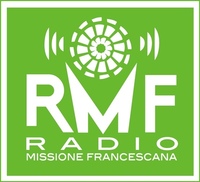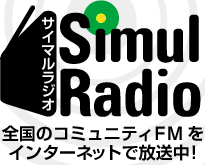|

| Venetian Bobbin Lace | This 16th-17th century Italian insertion represents a bridge between the braid laces and those with all parts made simultaneously. The intriguing design consists essentially of two ornamented scrolling braids made simultaneously between two borders. It is not radically different from 16th century passementeries. Although Genoese bobbin laces often copied the Reticella designs of Venetian needle lace, the more rare bobbin-made laces of Venice, like this example, did not. [L-3012]
Larger photo and magnified detail | |
|
|
|
Non-Continuous Bobbin Lace |
Milanese Braided Lace | Some of the earliest non-continuous laces developed in Milan. A tape-like strip of cloth stitch with openings along both sides was constructed with bobbins and curved as necessary to form the designs. Then with sewings (actually loops pulled through tiny openings with a crochet hook or needle) threads were attached to join the parts either with bars or a mesh background. My example is a peasant lace which may date from the late 18th century, and its design required only 10 bobbins. The earliest non-continuous laces of Milan and Flanders were much alike: with intricately-worked braids, the artisans formed exotic flowers and foliated scrolls, creating some magnificent pieces of textile art. [L-452]
Larger photo and magnified detail
The term "continuous" may be confusing, as some writers talk of "continuous" bobbin tapes. In a broader sense, however, "continuous" refers to laces made all in one -- pattern and ground together -- the antithesis of the braid or "trail" lace techniques. | |
 |
|
|
|
|

| Idria Braided Lace | This elegant twelve-inch medallion was made with tiny bobbin-made trails of linen stitch and intermittent half stitch, a more open weave. The background was filled afterwards with a bobbin-made réseau (mesh). A similar approach on a larger and simpler scale has been used by lacemakers throughout Eastern Europe. Similar work has sometimes been called "Idria" lace, suggesting that it originated in Slovenia. Since many settlers of that region were Czech or German, however, questions remain. Hungarian and Russian lace makers have also produced several styles of braided lace. If anyone can direct me to information on the lace shown, I would be grateful.
Straight pre-woven tapes have sometimes been used as a shortcut -- even for early laces. As such tapes had to be folded over or gathered to form curves, the resulting motifs were understandably awkward. The examples shown here are more sophisticated, because their bobbin-made tapes were shaped to form the designs. [L-68]
Larger photo | |
|
|
|
Braided Lace with Leaves | Bobbin-made trails of cloth stitch requiring either 12 or 16 bobbins form the main motifs on an unusual square-necked Victorian yoke. Exquisitely articulated leaves (point d'esprit) fill selected areas. [L-460]
Larger photo and magnified detail | |  |
|
|
|
|

| Duchesse | This Belgian lace style developed in the 1850's. Parts were constructed separately with filmy linen stitch or half stitch, and then assembled. Leaves were often veined with raised oversewn bundles of threads. Since flower sprigs, leaves and scrolls were joined by braided plaits, lace like that in this collar could not be duplicated by machine. Although generally associated with Belgium, lace in this style was made in several places, including Mirecourt, France. The English counterpart was Honiton, which was made with slightly heavier thread and different fillings. [L-75]
Larger photo and magnified detail | |
|
|
|
| 
| Brussels Point Duchesse | This small collar features a combination of Duchesse bobbin lace and minute needlepoint insertions. Most often we see small oval floral inserts called Rose Point. (An example appears on the Needlepoint Lace page.) Here, however, a continuous needle-made border of tiny wheel motifs extends across the collar's width below the top bobbin-made border, and still more intricate needle-made motifs fill scallops along the bottom. L-352]
Larger photo and magnified detail | |
|
|
|
Point d'Angleterre | This origin of this lace has been the subject of controversy. It was most likely made in Flanders (later Belgium) for export to England, and merely labeled "Angleterre" to circumvent import prohibitions. Exotic flowers and foliated scrolls were made first with bobbins, then intricate needlepoint fillings were added and a needle-made reséau (mesh ground) was filled in. Often the work was divided among specialists, so that the finished lace was the product of several people. These Belgian laces made from the 17th century on -- both in Flanders and elsewhere -- were copied, along with other classic laces, late in the 19th century in Burano, Italy. [L-1249]
Larger photo and magnified detail | |
 |
|
|
|
|

| Brussels Appliqué | Here separately made flower sprigs and scrolls were made with bobbins and then sewed to machine- made net. Both Duchess motifs made in Belgium and Honiton motifs made in England were often appliquéd, as were needlepoint motifs. With machine net, very large hand-ornamented pieces were practical, and even Queen Victoria's celebrated wedding lace was bobbin lace appliqué of the Honiton variety. In some early work, the net was trimmed away behind the motifs. [L-705]
Larger photo and magnified detail | |
|
|
|
Continuous Bobbin Lace |
Cluny Bobbin Lace | In contrast to the laces above, all parts of this wide insertion were made together: the linen-stitch trail, center motif and braided mesh ground were worked simultaneously. All of the necessary bobbins were hung from pins to start the lace, and arranged across the pillow. Inspired by 17th century Genoese bobbin lace, Cluny eventually became the most widely produced hand-made lace in the world. It's what many current-day beginners learn right after they have mastered basic Torchon techniques. This particular example is a heavy, sturdy lace, and very decorative, with two layers of flower petals in the motif centers. [L-1071]
Larger photo | |
 |
|
|
|
|

| Binche or Valenciennes | Made with gossamer linen thread, these early 18th century filmy, translucent Flemish laces are among the finest bobbin laces ever made. This delicate lappet, about 3 inches wide, was worked all in one piece, requiring hundreds of bobbins. Because all parts were worked simultaneously, such laces were the product of a single person. There is no cordonnet; instead rows of tiny holes outline the gently curving flowers of delicate cloth stitch. A fancy oeil de perdrix motif serves as the ground. To call the details in this lace subtle, is an understatement! [L-3001]
Larger photo and magnified detail | |
|
|
|
Mechlin
| Here we see another exquisite lappet made in Flanders in the first half of the 18th century. This complex example was made with fine threads equal to those in the piece above, creating lovely transparencies. The motifs were outlined with a heavier thread, and a distinctive mesh ground was used. The design is composed of floral motifs along with scrolls and cartouches enclosing small trefoils.
[L-3002]
Larger photo and magnified detail | |  |
|
|
|
|

| Chantilly | Black silk Chantilly lace was originally from the Ile-de-France. It was made in many places, however, and acquired its distinctive name later. It usually has a Lille (fond simple) ground, with motifs worked in half stitch, so there are no solid black areas. Thus it is delicate, open and filmy. A cordonnet of heavier thread outlines and separates the design areas. Large pieces, such as shawls, were worked in strips and joined by a nearly invisible stitch called point de raccroc. Chantilly lace was successfully imitated by machine beginning in the 1870s, and many of the copies can be difficult to separate from handmade examples. [L-671]
Larger photo and magnified detail | |
|
|
|
Lille | Fashions in the late 18th century became increasingly light and more fluid, and laces on garments were often gathered. Soft continuous laces like this were made in France, Scandinavia and all over Europe, with Belgium producing especially large quantities. Though laces of the Lille type first appeared around 1750, the example here is most likely from the end of the century. The ground is a fond simple réseau. [L-676]
Larger photo and magnified detail | |  |
|
|
|
| 
| Cluny | Here is another example of the popular Cluny/Torchon bobbin laces: a child's collar that integrates the design elements well. It has braided mesh and slim, oval leaves. These are the point d'esprit first devised by early Genoese bobbin lace makers. [L-831]
Larger photo | |
|
|
|
Beds Maltese | In the second half of the 19th century, English bobbin lace makers in Bedfordshire adapted the popular Maltese style, omitting the Maltese crosses that distinguished work from the island of Malta. The maker of this collar added new elements: vines, leaves and flowers, as well as tiered rosettes. Typical are the Bedfordshire square-ended tallies or point d'esprit, trails of half-stitch or cloth stitch, and plaited bars with picots. [L-746]
Larger photo | |
|  |
|
|
|
Beds Maltese | The scale of this bobbin lace collar is amazing: It is tiny! Only 1½ inches wide. Delicate raised tallies and appliquéd leaves give it a pleasing three-dimensional character. [L-703]
Larger photo and magnified detail | |  |
|
|
|
| 
| Bobbin Lace with Point de Paris Réseau | Laces in the style of this small round tablecloth were made in places as disparate as Antwerp, France and Southern Italy. Like the preceding examples, this is a continuous lace, with a small cordonnet outlining the birds, flowers and scrollwork. The Point de Paris mesh ground has a star-shaped configuration. [L-3010]
Larger photo and magnified detail | |
|
|
|
Sansepolcro Bobbin Lace
| This firm, stiff lace cravat could, at a glance, easily be mistaken for needle lace. Indeed, the points at the bottom seem to copy Punto in Aria forms. In technique and design, however, it most closely approaches Venetian bobbin lace like that at the top of this page. According to Carole Lassak, it is from the Sansepolcro area of Italy. [L-1033]
Larger photo and magnified detail | |  |
|
|
|
| 
| Silk Maltese | Made on the island of Malta, this lace collar includes the distinctive Maltese Cross. Along with its boldly scalloped forms, small flat leaves were used repetitively to display the shimmering luster of the ecru silk to best advantage. These typical wheat ears or leaves were copied from Genoese bobbin lace, and were present when the craft was revived in Malta in the 1830's.
[L-339]
Larger Photo | |
|
|
|
| One further note: Written historical records, mainly merchants' accounts, leave the question of bobbin lace origins in doubt. The extant laces themselves, however, are much more informative. Nearly everyone agrees that techniques used by the makers of elaborate passementeries were those used for the earliest bobbin lace made with linen threads. Sixteenth century pattern books display motifs said to be for both decorative metal/silk trims and narrow linen trims, insertions and borders. Among existing 16th century laces, however, only examples of Venetian bobbin lace are closely related to the passementerie designs in style, concept, and the technical processes revealed. Unfortunately, photos of these laces have not been widely published.
On the other hand, the early laces of Flanders, Milan and Genoa differ significantly in character from the passementeries. They either imitate Venetian Reticella/Punto in Aria needle laces or are of the non-continuous type -- assembled braided sections that were later joined with mesh or bars. I wonder if anyone can cite published examples of early Flemish bobbin laces that are indeed related to the passementeries? |
|
|





































































































































%2B-%2BPortrait%2BOf%2BFran%C3%A7oise%2BD'Escravayat%2C%2BMarquise%2BDe%2BLa%2BBarri%C3%A8re%2C%2BAs%2BFlora%2C.jpg)









.jpg)















































.jpg)















































































































No comments:
Post a Comment